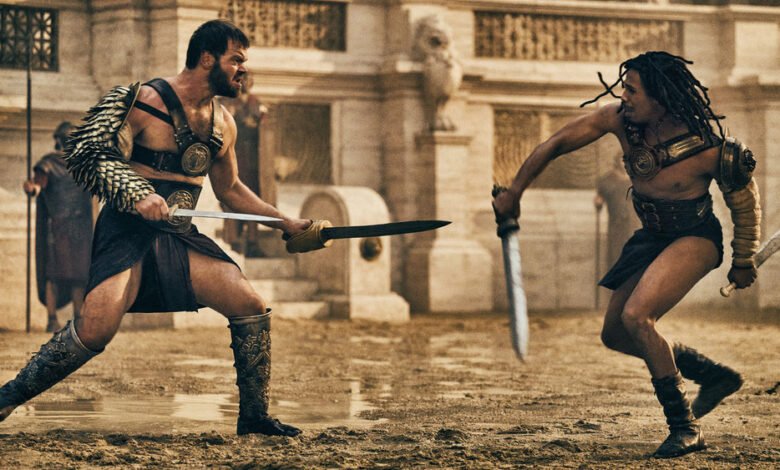Gladiator: The Legendary Warriors of Ancient Rome

Introduction to Gladiators
When we think of the term “gladiator,” the image that often comes to mind is that of a fierce warrior fighting in a massive Roman arena. Gladiators were more than just fighters; they were entertainers, symbols of power, and sometimes even political tools in the Roman Empire. These warriors fought in public spectacles, often to the death, to thrill audiences and satisfy the Roman appetite for excitement.
Interestingly, not all gladiators were slaves or prisoners of war, though many were. Some individuals voluntarily chose this dangerous profession for fame, wealth, or personal glory. Their battles were not random brawls but carefully organized events that combined strategy, athleticism, and dramatic performance. Gladiators became iconic figures of ancient Rome, leaving behind a cultural legacy that is still remembered today.
The concept of gladiators highlights the Roman obsession with strength, discipline, and entertainment. While brutal and violent, the games also represented the social values and political dynamics of one of the greatest empires in history. Understanding the gladiator’s role gives us a fascinating look into Roman society and the human desire for spectacle.
Origins of Gladiatorial Combat

The origins of gladiatorial combat are deeply rooted in ancient traditions. It is believed that the first gladiatorial games were connected to funeral rites. Families of noble Romans would organize battles as a way of honoring the dead, thinking that bloodshed could appease the spirits of the deceased. These private ceremonies eventually grew into public spectacles, sponsored by politicians seeking to gain popularity among the people.
By the 3rd century BCE, gladiator games had become more structured. They moved from small-scale rituals to grand events held in arenas that could hold tens of thousands of spectators. The Roman elite quickly realized how powerful these games could be in controlling and entertaining the masses. Hosting gladiatorial contests became a way to gain political favor, distract citizens from social problems, and display the wealth and generosity of those in power.
The popularity of these battles spread across the Roman Empire, becoming one of its defining cultural features. The gladiator’s origin story is not just about violence but also about how traditions, politics, and human fascination with conflict shaped one of the most enduring symbols of Roman life.
The Life of a Gladiator
The life of a gladiator was not an easy one. Most gladiators were slaves, prisoners of war, or criminals sentenced to fight in the arena. They lived in gladiator schools called ludi, where they were trained in combat techniques, endurance, and discipline. Life inside these schools was strict, but gladiators were also given food, medical care, and housing—things that many ordinary slaves did not enjoy.
Training was intense, and the men (and sometimes women) were taught to use a variety of weapons, depending on their fighting style. Some gladiators specialized in heavy armor and swords, while others were lightly armed and relied on speed and agility. The training was not only physical but also psychological, preparing them to face death with bravery and dignity.
Despite the hardships, being a gladiator could bring certain rewards. Successful fighters gained fame, admiration, and sometimes even wealth. Crowds adored them, and in rare cases, a gladiator could earn his freedom through exceptional skill and bravery. However, most lived short and brutal lives, with survival often depending on a mix of skill, luck, and the mercy of the crowd or the emperor.
Gladiator Games and the Arena
The centerpiece of gladiator culture was the arena. The most famous of all was the Colosseum in Rome, an architectural wonder that could hold over 50,000 spectators. The games were massive events that combined drama, ritual, and bloodshed. They often began with elaborate parades, music, and sometimes even mock naval battles when the arena was flooded with water.
Once the games began, gladiators would enter the arena to fight against one another or sometimes against wild animals. These matches were not chaotic free-for-alls; they were organized with rules, referees, and careful pairings of fighters with different skill sets. For example, a heavily armored gladiator might face a faster, lightly armed opponent, creating an exciting balance of strength and agility.
The audience played a key role in the outcome of battles. If a gladiator was defeated but still alive, the crowd and sometimes the emperor would decide whether he should be spared or executed. This gave the games a dramatic and unpredictable element that kept spectators engaged. The arena was more than just a place for fighting—it was a stage where life, death, and spectacle collided in unforgettable ways.
Types of Gladiators
Not all gladiators were the same. Over time, distinct categories of fighters developed, each with its own weapons, armor, and fighting techniques. For example, the Murmillo fought with a large rectangular shield and a short sword, wearing heavy armor. The Retiarius, on the other hand, fought with a net and trident, relying on speed and agility instead of heavy protection.
Other types included the Thracian, who wielded a curved sword, and the Secutor, designed specifically to fight against the Retiarius, with smooth armor that prevented the net from catching. These unique categories made the matches more thrilling for the audience, as they could watch very different fighting styles clash against one another.
The variety of gladiators also reflected the diversity of the Roman Empire. Many of the fighters came from different regions, bringing with them unique weapons and traditions. This cultural blending made the games not just a form of entertainment but also a display of Rome’s vast power and influence across the ancient world.
The Role of Gladiators in Roman Society
Gladiators held a strange position in Roman society. On one hand, they were seen as low-class individuals—slaves, criminals, or outsiders. On the other hand, they were admired for their courage, strength, and endurance. Crowds idolized the most successful fighters, and their images appeared on pottery, graffiti, and even jewelry.
Politically, gladiator games served as a tool for leaders to control the population. Emperors and senators often sponsored games to win favor with the public, using the spectacle to distract people from economic struggles or political scandals. The phrase “bread and circuses” perfectly describes this strategy: providing food and entertainment to keep the masses content.
For many Romans, gladiators embodied the ideals of discipline, bravery, and resilience. Even though their profession was brutal, it captured the imagination of the empire. Their presence in society was a reflection of Roman values—strength, honor, and the acceptance of mortality as part of life.
The Decline of Gladiators
Gladiatorial combat did not last forever. By the 5th century CE, the practice began to fade away. Several factors contributed to this decline, including the rise of Christianity, which condemned the games as immoral and inhumane. As Christian values spread across the empire, public appetite for bloodsport decreased.
Economic challenges also played a role. Maintaining gladiator schools, arenas, and events was expensive, and Rome faced increasing financial difficulties in its later years. Without strong political or financial support, the games lost their significance. Additionally, shifting cultural values meant that people sought new forms of entertainment and no longer glorified the brutal spectacles of the past.
By the time the Western Roman Empire fell, gladiatorial combat had disappeared entirely. What remained, however, was the legend of the gladiator, preserved in historical records, art, and eventually modern storytelling. The decline of gladiators marked the end of one of the most fascinating, though violent, chapters of Roman history.
Gladiators in Modern Culture
Today, the image of the gladiator lives on through films, literature, and video games. Movies like Gladiator (2000) revived interest in these ancient warriors, portraying them as symbols of freedom, resistance, and human strength. While Hollywood often dramatizes their stories, it reflects the lasting fascination people have with gladiators.
Modern sports are sometimes compared to gladiatorial combat, with athletes admired for their physical skills, endurance, and ability to perform under pressure. Though thankfully without the bloodshed, the parallels are clear—people still crave competition, spectacle, and heroes who rise above the odds.
The legacy of gladiators also reminds us of the darker side of human history. Their existence forces us to think about the fine line between entertainment and cruelty, as well as the values we celebrate in our own cultures today. The gladiator, in many ways, has become both a cautionary tale and an enduring symbol of human resilience.
Conclusion
The gladiator remains one of the most enduring figures of ancient history. These warriors were more than just fighters; they were cultural icons, political tools, and symbols of Roman strength. From their origins in funeral rituals to their starring role in massive arenas like the Colosseum, gladiators shaped the way Romans viewed life, death, and entertainment.
Though their world was violent and unforgiving, gladiators captured the imagination of their contemporaries and continue to inspire fascination today. Whether viewed as tragic victims or celebrated heroes, their story is inseparable from the history of Rome itself.
The gladiator’s legacy lives on not only in history books but also in popular culture, reminding us of the timeless human attraction to courage, competition, and spectacle.



